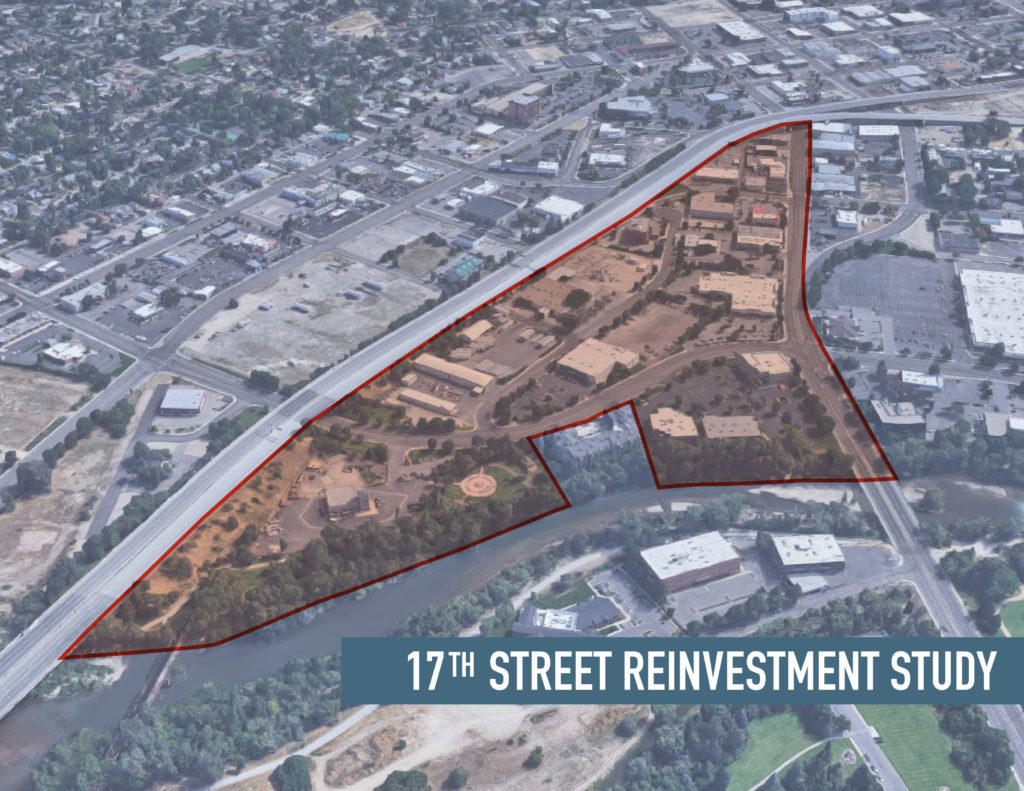17th Street
Reinvestment Study
Background
In summer 2021, Capital City Development Corp. completed the 17th Street Reinvestment Study to evaluate and prioritize public infrastructure investments in the 17th Street Neighborhood. The 17th Street Reinvestment Study Area is approximately 44.4 acres within the Shoreline District and directly adjacent to downtown Boise. The Study Area is bound by the Boise River to the west, Interstate 184 (the Connector) to the north and Americana Boulevard to the south and east.
Parcels in the Study Area are remnants of former industrial, warehousing and transportation activities. Early 20th century development patterns established this area as the end of the train lines, and the land was used as a rail yard. The former urban street grid was broken up by the completion of the I-184 Connector leaving large blocks and small, undevelopable parcels. Much of the area is disconnected from the surrounding neighborhood due to the Connector.
Opportunities and Strengths
- The Study Area’s proximity to downtown creates an opportunity to transition into a lifestyle-oriented neighborhood, meaning the 17th Street Area exhibits all the characteristics of a walkable dense urban village but is missing the needed mix of housing and businesses.
- The area is primed for potential redevelopment due to a combination of vacant land and investment opportunities.
- Increasing development pressure exists immediately adjacent to Study Area.
- Current landowners share a strong vision for urban redevelopment and a desire for partnerships.
- Publicly-owned land within the Study Area offers development opportunities.
- The Study Area’s connectivity to the city’s greenbelt brings commuters and recreational users into the neighborhood.
Needs and Challenges
- To make this a truly mixed use neighborhood, the area needs housing, retail and other gathering places.
- A lack of locally-serving destinations create a pass-through neighborhood.
- The area desires or catalyst projects and associated incentives.
- Neighborhood lacks the energy and vibrancy that is typically created by extended business hours.
- Existing public spaces are designed for passive recreation—the neighborhood lacks active public spaces that facilitate socialization.
- Current city streetscape standards are not satisfied in the Study Area.
Summary of Recommendations
- Implement the city’s streetscape standards in the neighborhood, prioritizing the corridors with the highest needs identified as 17th Street and Americana Blvd.
- Create strategies to include public amenities where possible.
- Create public gathering spaces for community activities and events using festival streetscape design standards.
- Improve public safety through street improvements and activated neighborhood standards.
CCDC Project Manager Zach Piepmeyer oversaw this study.

